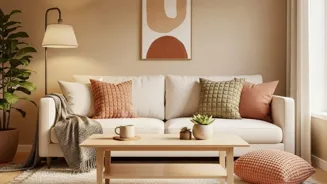Wellness is no longer a niche trend in interior design. It’s a movement redefining the way we think about our spaces. From homes to offices, healthcare centres to hospitality venues, design now goes beyond
aesthetics to actively promote both mental and physical well-being. The modern consumer is looking for interiors that not only look beautiful but also support a healthier lifestyle through thoughtful layouts, soothing colour palettes, ergonomic solutions, and hygienic, sustainable materials.
“Wellness has always been a key priority in interior design. Consumers and designers alike are seeking solutions that go beyond visual appeal, prioritising surfaces that actively contribute to a cleaner, healthier living environment,” says Parul Mittal, MD, Greenlam Industries.
The Use Of Materials That Promote Health
A major shift is happening in the choice of materials. Designers are increasingly turning to antibacterial, virus-resistant, and low-emission surfaces, especially for kitchens, hospitals, and high-traffic areas. Beyond their hygiene benefits, these materials are also designed for durability and ease of maintenance, ensuring they remain functional and attractive for years. The emphasis is on creating interiors where health and design coexist seamlessly, making wellness an integral part of everyday living.
Bathrooms as Personal Wellness Retreats
Bathrooms are undergoing a dramatic transformation, evolving from purely functional spaces into immersive wellness sanctuaries. Ranjeet Oak, MD, South Asia, Kohler, observes, “Luxury bathrooms today are transforming into immersive, wellness-centric spaces. From voice-enabled intelligent toilets and customizable digital showering experiences to mood-enhancing lighting, every detail is curated to elevate both comfort and self-expression.”
This shift reflects a growing appetite for personalised experiences, where technology and design come together to deliver spa-level indulgence at home.
Furniture that Moves with You
Furniture design is also embracing wellness by focusing on ergonomics, adaptability, and emotional comfort. Raghunandan Saraf, Founder & CEO, Saraf Furniture, notes, “What people want are accessories and furniture that help them to keep posture, move and take a break. Mental health is playing a huge role, with gentler color palettes, clutter-free storage, and nature-based design encouraging calmness.”
With more people working, relaxing, and entertaining in the same space, multifunctional furniture is becoming essential. Think modular sofas that adapt to your mood, coffee tables that convert into play surfaces, or benches with concealed storage. These innovations ensure spaces remain flexible, uncluttered, and conducive to both productivity and relaxation.
Designing for Human Rhythms
Ultimately, wellness-focused interiors are about designing around human needs and rhythms – creating spaces that encourage relaxation, promote calm, and support physical health. From the textures we touch to the light we wake up to, every design choice influences how we feel and function. And as the wellness movement grows, it’s clear that interiors of the future will be as much about how they make us feel as how they look.

